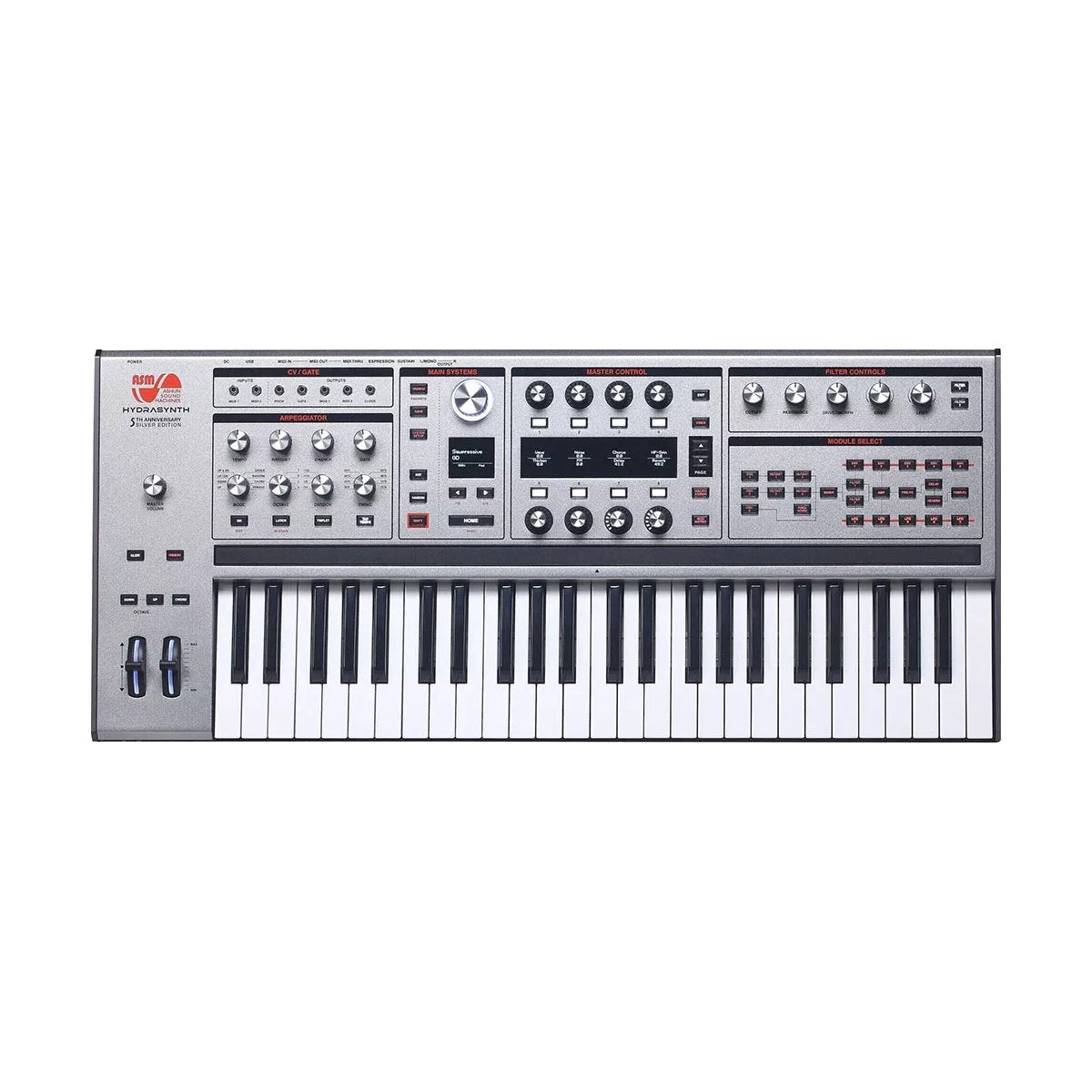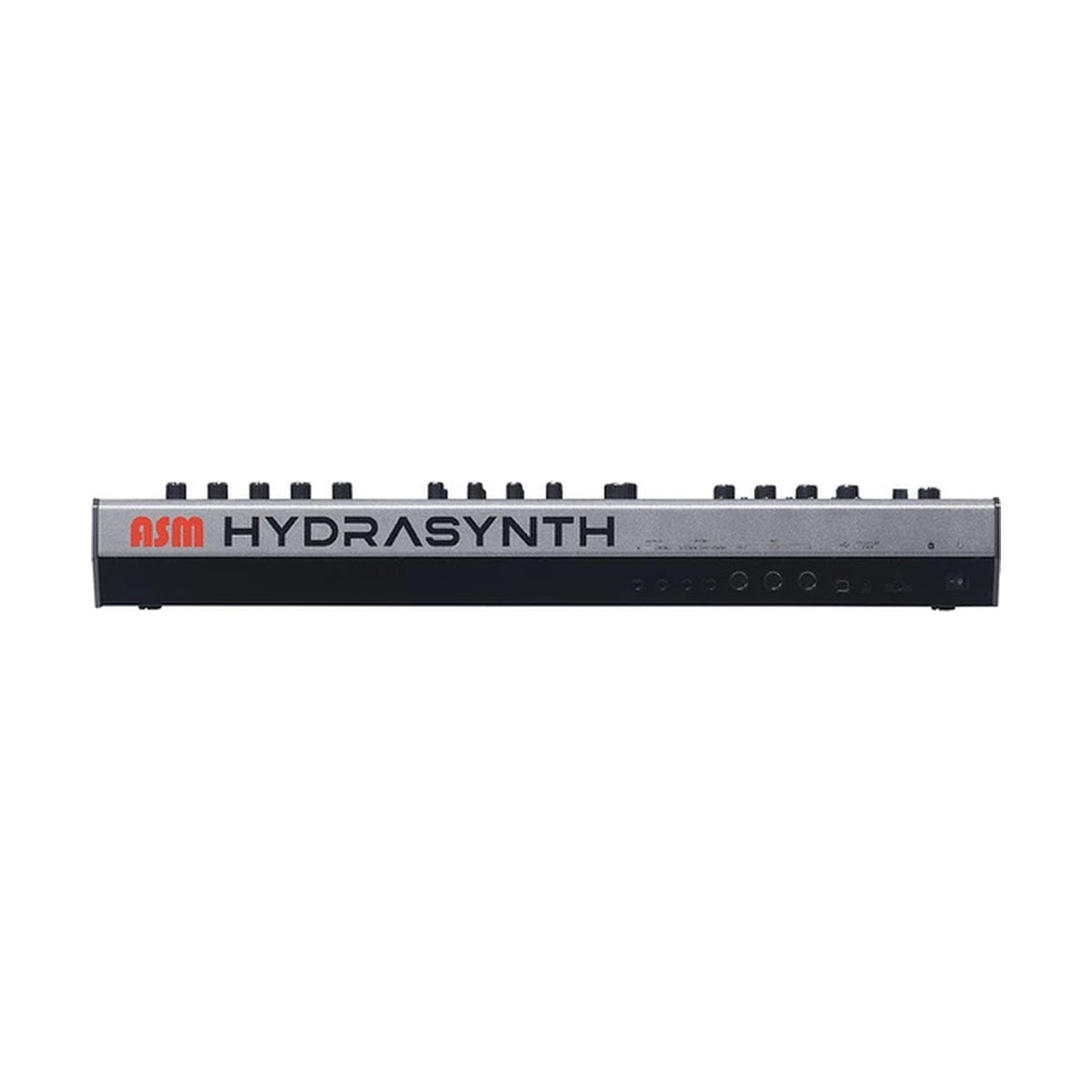


ASM
ASM Hydrasynth Keyboard Silver Edition
Choose options
ASM Hydrasynth Keyboard Silver Edition – 49-key polyphonic wavetable synthesizer with a powerful modulation matrix, polyphonic aftertouch, ribbon controller, and dual filters in serial or parallel configuration.
The ASM Hydrasynth Keyboard Silver Edition is a powerhouse for sound designers and performing musicians alike. Its 8-voice polyphonic engine is built on advanced wavetable synthesis with three oscillators, two unique Wave Mutants, and dual filters that can be routed in series or parallel. The intuitive layout, OLED displays, and shortcut-driven interface ensure fast and efficient patch creation.
The keybed features ASM’s proprietary Polytouch technology, offering full polyphonic aftertouch for deep expressive control. Above the keyboard, a 4-octave ribbon controller adds further performance potential with pitch, modulation, and theremin-like playability. With 5 DAHDSR envelopes, 5 complex LFOs, and 32-slot modulation matrix routing 35 sources to 191 destinations, Hydrasynth delivers near-limitless modulation capability.
Studio integration is seamless with MIDI I/O, USB-MIDI, and CV/Gate connectivity. Built-in effects—including chorus, flanger, distortion, compressor, and advanced reverbs and delays—add polish without external gear. Macros, randomization, and patch management tools round out the experience, making Hydrasynth both a creative sound lab and a live performance instrument.
KEY FEATURES
- 8-voice polyphonic wavetable synthesizer
- 49-key Polytouch keybed with polyphonic aftertouch
- 3 oscillators with 219 waveforms and waveform morphing
- 2 Wave Mutants with FM, PWM, Sync, Harmonic Sweep, and more
- Dual multimode filters in series or parallel (incl. SEM-style filter)
- 5 DAHDSR envelopes and 5 complex LFOs with step and quantize options
- 32-slot modulation matrix with 35 sources and 191 destinations
- 4-octave ribbon controller with pitch, CV, and Theremin mode
- CV/Gate in/out compatible with Eurorack and Buchla standards
- MIDI DIN, USB-MIDI, and support for MPE
- 256 factory patches + 768 user slots (1024 total)
- High-quality onboard effects: chorus, phaser, reverb, delay, distortion
- OLED displays, macro controls, and powerful patch browser
TECHNICAL SPECIFICATIONS
- Keyboard: 49 keys with velocity and polyphonic aftertouch
- Oscillators: 3 per voice with waveform morphing
- Filters: Dual filters (16 models + SEM-style continuous filter)
- Envelopes: 5 x 6-stage DAHDSR envelopes
- LFOs: 5 with 10 waveforms + step mode (up to 64 steps)
- Modulation matrix: 32 slots, 35 sources, 191 destinations
- Arpeggiator: 64 phrase modes, ratchet, swing, chance, step offset
- Effects: Pre-FX, Delay, Reverb, Post-FX with modulation
- CV/Gate: 4 inputs, 4 outputs (mod, gate, pitch, expression)
- Audio: Line outputs L/R, headphone out
- MIDI: In/Out/Thru + USB-MIDI
- Display: OLED for each module + master screen
- Patch memory: 1024 total (8 banks x 128 patches)
- Dimensions: 80.5 x 30.5 x 11 cm
- Weight: 9.1 kg
- Power: External power adapter included





